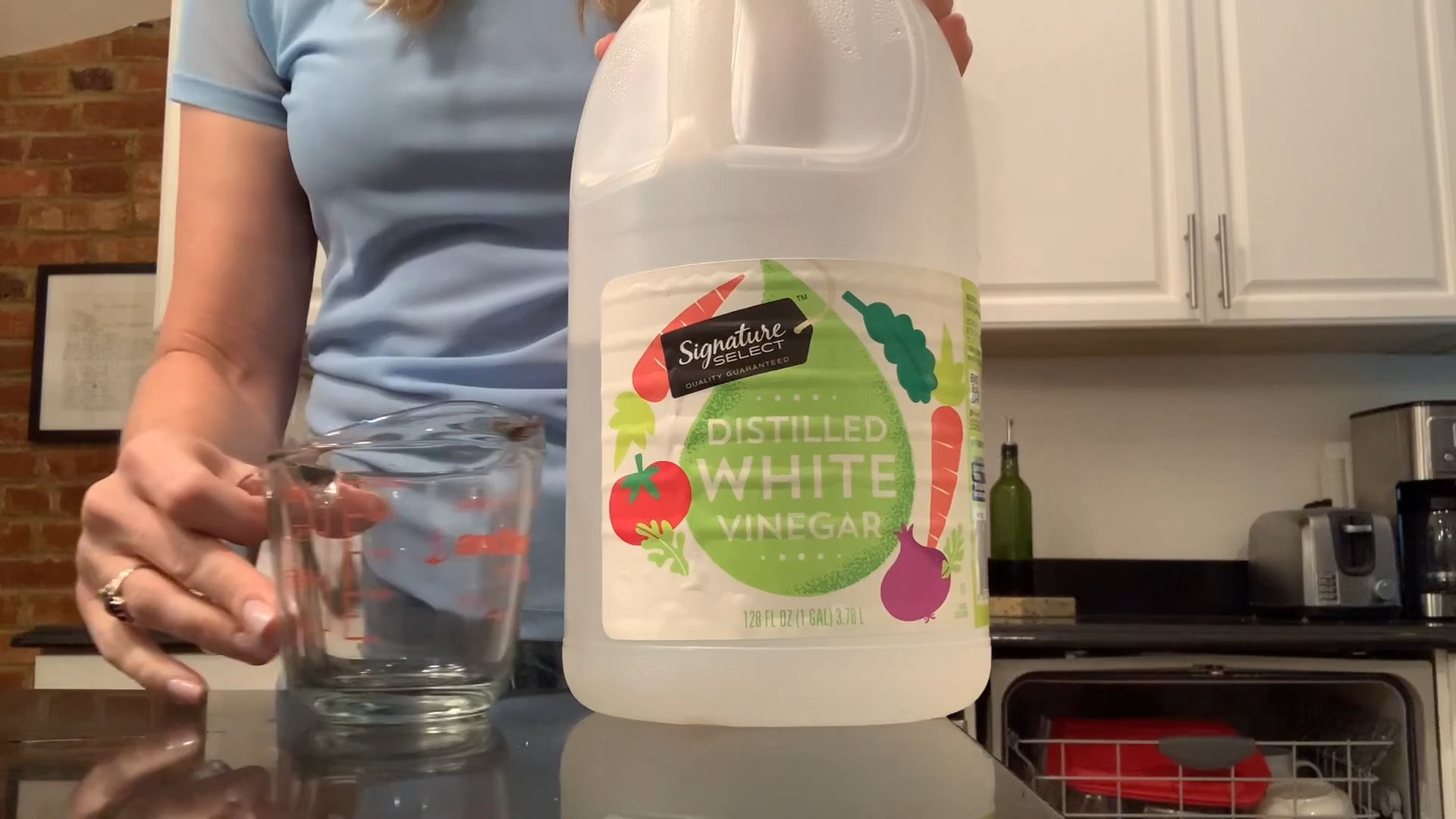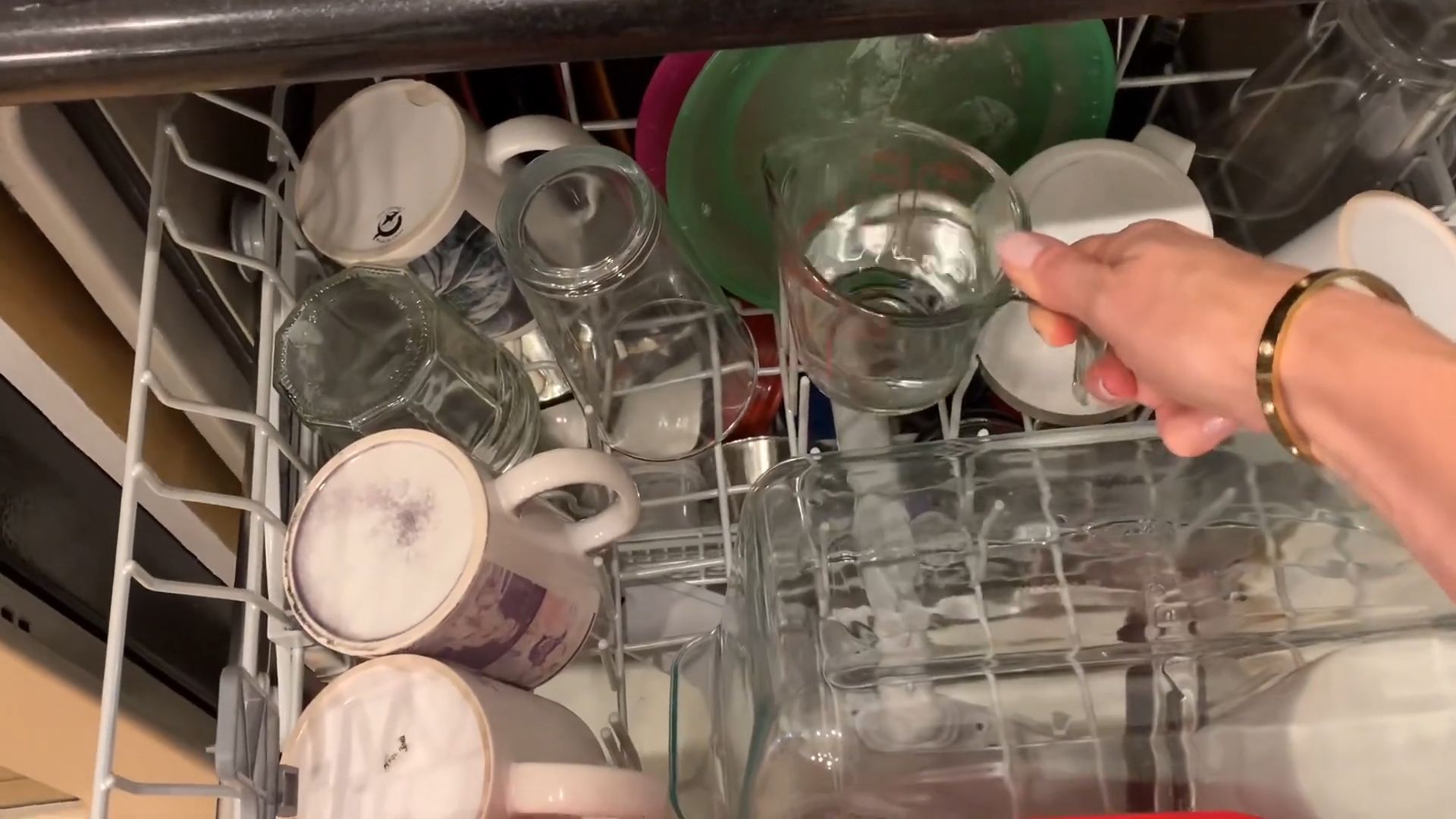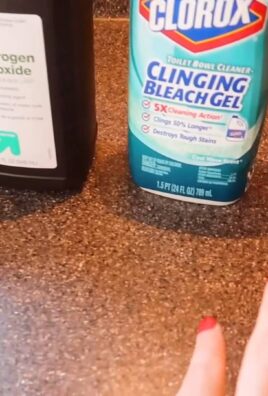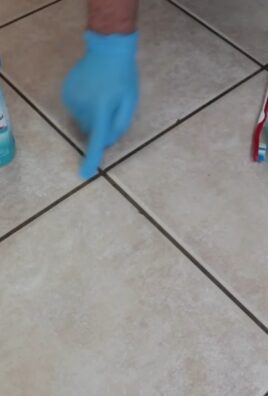Vinegar cleaning solutions: the unsung heroes of a sparkling home! I’m always on the lookout for ways to simplify my cleaning routine, and let me tell you, vinegar has become my absolute go-to. Forget those harsh chemicals with their overpowering smells and hefty price tags. We’re diving into the world of DIY cleaning with a pantry staple that’s been around for centuries.
Did you know that vinegar’s cleaning power has been recognized since ancient times? Egyptians and Romans used it for everything from preserving food to disinfecting wounds. Talk about a multi-tasker! But its cleaning prowess truly shines in the home.
In today’s world, we’re all striving for a cleaner, healthier living space, but who has the time (or the budget) for endless specialty cleaners? That’s where these DIY vinegar cleaning solutions come in. I’m going to share some of my favorite tricks and hacks that will not only save you money but also reduce your exposure to harmful chemicals. From tackling stubborn stains to deodorizing your fridge, get ready to unlock the cleaning potential of this amazing natural ingredient. Let’s get started!

DIY All-Purpose Vinegar Cleaning Solutions: Your Guide to a Sparkling Home
Hey there, fellow DIY enthusiasts! I’m so excited to share my favorite vinegar cleaning recipes with you. Vinegar is a powerhouse cleaner, and it’s incredibly affordable and eco-friendly. Forget those harsh chemicals – let’s get our homes sparkling with the power of vinegar!
Why Vinegar?
Before we dive into the recipes, let’s quickly chat about why vinegar is such a fantastic cleaning agent. It’s naturally acidic, which helps to dissolve grime, soap scum, hard water stains, and even some types of mold. Plus, it’s a natural deodorizer! Just be aware that you shouldn’t use vinegar on natural stone surfaces like marble or granite, as it can etch them.
Essential Supplies
Here’s what you’ll generally need for these recipes:
* White distilled vinegar (the star of the show!)
* Spray bottles (I like to have a few on hand)
* Essential oils (optional, for fragrance and added cleaning power)
* Baking soda (for extra scrubbing power)
* Water (distilled water is best, but tap water works too)
* Measuring cups and spoons
* Microfiber cloths (they’re great for streak-free cleaning)
* Funnel (makes pouring easier)
All-Purpose Cleaner
This is my go-to cleaner for almost everything! It’s simple, effective, and smells amazing (if you add essential oils, of course!).
Ingredients:
* 1 part white distilled vinegar
* 1 part water
* 10-20 drops of your favorite essential oil (I love lemon, lavender, or tea tree)
Instructions:
1. Combine Ingredients: In a spray bottle, combine the vinegar and water. Use a funnel to avoid spills!
2. Add Essential Oils: Add your chosen essential oils. Remember, less is more! Start with 10 drops and add more if you want a stronger scent.
3. Shake Well: Give the bottle a good shake to mix everything together.
4. Label: Label your bottle clearly so you know what’s inside.
5. Use: Spray on surfaces and wipe clean with a microfiber cloth.
Tips and Tricks:
* For extra cleaning power, let the solution sit on the surface for a few minutes before wiping.
* Test the cleaner on an inconspicuous area first, especially on delicate surfaces.
* Avoid using this cleaner on natural stone, waxed wood, or electronics.
Glass and Window Cleaner
Say goodbye to streaks! This vinegar-based glass cleaner will leave your windows and mirrors sparkling.
Ingredients:
* 1/4 cup white distilled vinegar
* 2 cups water
* Optional: 1-2 drops of dish soap (use sparingly!)
Instructions:
1. Combine Ingredients: In a spray bottle, combine the vinegar and water. If using dish soap, add just a tiny amount. Too much soap will leave streaks.
2. Shake Gently: Gently shake the bottle to mix the ingredients.
3. Spray and Wipe: Spray the solution onto your windows or mirrors.
4. Wipe Clean: Use a clean microfiber cloth or newspaper to wipe the surface dry. I find that newspaper works surprisingly well!
Tips and Tricks:
* Avoid cleaning windows on a sunny day, as the solution can dry too quickly and leave streaks.
* Use a squeegee for large windows for a professional finish.
* For stubborn spots, let the solution sit for a minute or two before wiping.
Bathroom Cleaner
This cleaner is perfect for tackling soap scum, hard water stains, and mildew in your bathroom.
Ingredients:
* 1/2 cup white distilled vinegar
* 1/2 cup water
* 1/4 cup baking soda
* Optional: 10-15 drops of tea tree oil (for its antifungal properties)
Instructions:
1. Combine Vinegar and Water: In a spray bottle, combine the vinegar and water.
2. Add Baking Soda: Slowly add the baking soda. Be prepared for some fizzing!
3. Add Essential Oil (Optional): Add tea tree oil if desired.
4. Shake Gently: Gently shake the bottle to mix the ingredients.
5. Spray and Scrub: Spray the solution onto bathroom surfaces like shower walls, tiles, and sinks.
6. Let Sit: Let the solution sit for 10-15 minutes to allow the vinegar and baking soda to work their magic.
7. Scrub and Rinse: Scrub the surfaces with a sponge or brush, then rinse thoroughly with water.
Tips and Tricks:
* For tough stains, make a paste of baking soda and vinegar and apply it directly to the stain. Let it sit for 30 minutes before scrubbing.
* Use an old toothbrush to clean grout lines.
* Ventilate the bathroom well while cleaning.
Drain Cleaner
Unclog your drains naturally with this simple vinegar and baking soda solution.
Ingredients:
* 1 cup baking soda
* 2 cups white distilled vinegar
* Boiling water
Instructions:
1. Pour Baking Soda: Pour the baking soda down the drain.
2. Pour Vinegar: Pour the vinegar down the drain after the baking soda.
3. Let Fizz: Let the mixture fizz for 30 minutes. This chemical reaction helps to break down clogs.
4. Flush with Boiling Water: After 30 minutes, carefully pour boiling water down the drain to flush away the clog.
Tips and Tricks:
* For stubborn clogs, repeat the process.
* Use a plunger after flushing with boiling water to help dislodge any remaining debris.
* Prevent clogs by regularly flushing your drains with hot water.
Microwave Cleaner
Cleaning the microwave can be a pain, but this vinegar trick makes it a breeze!
Ingredients:
* 1/2 cup white distilled vinegar
* 1/2 cup water
Instructions:
1. Combine Ingredients: In a microwave-safe bowl, combine the vinegar and water.
2. Microwave: Microwave the mixture on high for 5-10 minutes, or until the solution boils and the microwave is filled with steam.
3. Let Sit: Let the bowl sit in the microwave for another 5-10 minutes. The steam will loosen any stuck-on food.
4. Wipe Clean: Carefully remove the bowl (it will be hot!) and wipe down the inside of the microwave with a damp cloth.
Tips and Tricks:
* Add a few drops of lemon essential oil to the mixture for a fresh scent.
* Be careful when removing the bowl from the microwave, as it will be very hot.
* For stubborn spots, scrub gently with a sponge.
Laundry Booster
Vinegar can also be used in your laundry to brighten whites, soften fabrics, and remove odors.
Instructions:
1. Add to Wash: Add 1/2 cup of white distilled vinegar to your washing machine’s fabric softener dispenser.
2. Wash as Usual: Wash your clothes as usual.
Tips and Tricks:
* Don’t worry about your clothes smelling like vinegar! The scent will dissipate as they dry.
* Vinegar can help remove mildew smells from towels and musty odors from clothes.
* Do not use vinegar with bleach, as it can create harmful fumes.
Cutting Board Sanitizer
Keep your cutting boards clean and sanitized with vinegar.
Instructions:
1. Spray with Vinegar: Spray your cutting board with white distilled vinegar.
2. Let Sit: Let the vinegar sit on the cutting board for a few minutes.
Hey there, fellow DIY enthusiasts! I’m so excited to share my favorite vinegar cleaning recipes with you. Vinegar is a powerhouse cleaner, and it’s incredibly affordable and eco-friendly. Forget those harsh chemicals – let’s get our homes sparkling with the power of vinegar!
Why Vinegar?
Before we dive into the recipes, let’s quickly chat about why vinegar is such a fantastic cleaning agent. It’s naturally acidic, which helps to dissolve grime, soap scum, hard water stains, and even some types of mold. Plus, it’s a natural deodorizer! Just be aware that you shouldn’t use vinegar on natural stone surfaces like marble or granite, as it can etch them.
Essential Supplies
Here’s what you’ll generally need for these recipes:
* White distilled vinegar (the star of the show!)
* Spray bottles (I like to have a few on hand)
* Essential oils (optional, for fragrance and added cleaning power)
* Baking soda (for extra scrubbing power)
* Water (distilled water is best, but tap water works too)
* Measuring cups and spoons
* Microfiber cloths (they’re great for streak-free cleaning)
* Funnel (makes pouring easier)
All-Purpose Cleaner
This is my go-to cleaner for almost everything! It’s simple, effective, and smells amazing (if you add essential oils, of course!).
Ingredients:
* 1 part white distilled vinegar
* 1 part water
* 10-20 drops of your favorite essential oil (I love lemon, lavender, or tea tree)
Instructions:
1. Combine Ingredients: In a spray bottle, combine the vinegar and water. Use a funnel to avoid spills!
2. Add Essential Oils: Add your chosen essential oils. Remember, less is more! Start with 10 drops and add more if you want a stronger scent.
3. Shake Well: Give the bottle a good shake to mix everything together.
4. Label: Label your bottle clearly so you know what’s inside.
5. Use: Spray on surfaces and wipe clean with a microfiber cloth.
Tips and Tricks:
* For extra cleaning power, let the solution sit on the surface for a few minutes before wiping.
* Test the cleaner on an inconspicuous area first, especially on delicate surfaces.
* Avoid using this cleaner on natural stone, waxed wood, or electronics.
Glass and Window Cleaner
Say goodbye to streaks! This vinegar-based glass cleaner will leave your windows and mirrors sparkling.
Ingredients:
* 1/4 cup white distilled vinegar
* 2 cups water
* Optional: 1-2 drops of dish soap (use sparingly!)
Instructions:
1. Combine Ingredients: In a spray bottle, combine the vinegar and water. If using dish soap, add just a tiny amount. Too much soap will leave streaks.
2. Shake Gently: Gently shake the bottle to mix the ingredients.
3. Spray and Wipe: Spray the solution onto your windows or mirrors.
4. Wipe Clean: Use a clean microfiber cloth or newspaper to wipe the surface dry. I find that newspaper works surprisingly well!
Tips and Tricks:
* Avoid cleaning windows on a sunny day, as the solution can dry too quickly and leave streaks.
* Use a squeegee for large windows for a professional finish.
* For stubborn spots, let the solution sit for a minute or two before wiping.
Bathroom Cleaner
This cleaner is perfect for tackling soap scum, hard water stains, and mildew in your bathroom.
Ingredients:
* 1/2 cup white distilled vinegar
* 1/2 cup water
* 1/4 cup baking soda
* Optional: 10-15 drops of tea tree oil (for its antifungal properties)
Instructions:
1. Combine Vinegar and Water: In a spray bottle, combine the vinegar and water.
2. Add Baking Soda: Slowly add the baking soda. Be prepared for some fizzing!
3. Add Essential Oil (Optional): Add tea tree oil if desired.
4. Shake Gently: Gently shake the bottle to mix the ingredients.
5. Spray and Scrub: Spray the solution onto bathroom surfaces like shower walls, tiles, and sinks.
6. Let Sit: Let the solution sit for 10-15 minutes to allow the vinegar and baking soda to work their magic.
7. Scrub and Rinse: Scrub the surfaces with a sponge or brush, then rinse thoroughly with water.
Tips and Tricks:
* For tough stains, make a paste of baking soda and vinegar and apply it directly to the stain. Let it sit for 30 minutes before scrubbing.
* Use an old toothbrush to clean grout lines.
* Ventilate the bathroom well while cleaning.
Drain Cleaner
Unclog your drains naturally with this simple vinegar and baking soda solution.
Ingredients:
* 1 cup baking soda
* 2 cups white distilled vinegar
* Boiling water
Instructions:
1. Pour Baking Soda: Pour the baking soda down the drain.
2. Pour Vinegar: Pour the vinegar down the drain after the baking soda.
3. Let Fizz: Let the mixture fizz for 30 minutes. This chemical reaction helps to break down clogs.
4. Flush with Boiling Water: After 30 minutes, carefully pour boiling water down the drain to flush away the clog.
Tips and Tricks:
* For stubborn clogs, repeat the process.
* Use a plunger after flushing with boiling water to help dislodge any remaining debris.
* Prevent clogs by regularly flushing your drains with hot water.
Microwave Cleaner
Cleaning the microwave can be a pain, but this vinegar trick makes it a breeze!
Ingredients:
* 1/2 cup white distilled vinegar
* 1/2 cup water
Instructions:
1. Combine Ingredients: In a microwave-safe bowl, combine the vinegar and water.
2. Microwave: Microwave the mixture on high for 5-10 minutes, or until the solution boils and the microwave is filled with steam.
3. Let Sit: Let the bowl sit in the microwave for another 5-10 minutes. The steam will loosen any stuck-on food.
4. Wipe Clean: Carefully remove the bowl (it will be hot!) and wipe down the inside of the microwave with a damp cloth.
Tips and Tricks:
* Add a few drops of lemon essential oil to the mixture for a fresh scent.
* Be careful when removing the bowl from the microwave, as it will be very hot.
* For stubborn spots, scrub gently with a sponge.
Laundry Booster
Vinegar can also be used in your laundry to brighten whites, soften fabrics, and remove odors.
Instructions:
1. Add to Wash: Add 1/2 cup of white distilled vinegar to your washing machine’s fabric softener dispenser.
2. Wash as Usual: Wash your clothes as usual.
Tips and Tricks:
* Don’t worry about your clothes smelling like vinegar! The scent will dissipate as they dry.
* Vinegar can help remove mildew smells from towels and musty odors from clothes.
* Do not use vinegar with bleach, as it can create harmful fumes.
Cutting Board Sanitizer
Keep your cutting boards clean and sanitized with vinegar.
Instructions:
1. Spray with Vinegar: Spray your cutting board with white distilled vinegar.
2. Let Sit: Let the vinegar sit on the cutting board for a few minutes.
3. Wipe Clean: Wipe the cutting board clean with a damp cloth.
Tips and Tricks:
* Vinegar is especially effective at sanitizing cutting boards after cutting raw meat or poultry.
* For extra cleaning power, sprinkle baking soda on the cutting board before spraying with vinegar.
Coffee Maker Cleaner
Keep your coffee maker running smoothly by cleaning it with vinegar.
Instructions:
1. Fill with Vinegar: Fill the water reservoir of your coffee maker with equal parts white distilled vinegar and water.
2. Brew: Brew the mixture as you would normally brew coffee.
3. Rinse: Run a cycle with plain water to rinse out any remaining vinegar.
4. Repeat: Repeat the rinsing cycle a few times to ensure all the vinegar is gone.
Tips and Tricks:
* Clean your coffee maker every month or two to prevent mineral buildup.
* If your coffee maker has a particularly strong mineral buildup, let the vinegar solution sit in the reservoir for a few hours before brewing.
Oven

Conclusion
So, there you have it! Ditching those expensive, chemical-laden cleaners and embracing the power of vinegar cleaning solutions is not just a trend; it’s a smart, sustainable, and incredibly effective way to keep your home sparkling. We’ve explored the versatility of vinegar, from banishing stubborn hard water stains to deodorizing your refrigerator, and hopefully, you’re now convinced of its cleaning prowess.
Why is this DIY trick a must-try? Because it’s economical. You’re likely already stocked with vinegar, making it a readily available and budget-friendly alternative to commercial cleaners. It’s also environmentally friendly. By using vinegar, you’re reducing your reliance on harsh chemicals that can pollute our waterways and harm the environment. And finally, it’s surprisingly effective. Vinegar’s acidity naturally cuts through grease, grime, and mildew, leaving your surfaces clean and fresh.
But the beauty of vinegar cleaning solutions lies in their adaptability. Feel free to experiment with different infusions. Add citrus peels like lemon or orange to your vinegar for a refreshing scent and extra cleaning power. Infuse herbs like rosemary or lavender for a calming aroma. For tougher stains, consider creating a paste of baking soda and vinegar for a powerful scrubbing action. You can even use different types of vinegar! White vinegar is the workhorse of the cleaning world, but apple cider vinegar can be a gentler option for delicate surfaces. Just remember to always test your solution in an inconspicuous area first, especially on natural stone or wood.
Don’t be afraid to get creative! Perhaps you’ll discover a unique vinegar cleaning solution that becomes your go-to for a specific task. The possibilities are endless.
We wholeheartedly encourage you to try these DIY vinegar cleaning solutions. Embrace the simplicity, the savings, and the satisfaction of knowing you’re creating a healthier home for yourself and a healthier planet for everyone.
Once you’ve given it a try, we’d love to hear about your experience! Share your tips, tricks, and successes in the comments below. What surfaces did you clean? What infusions did you try? Did you discover any unexpected benefits? Your feedback will not only help other readers but also contribute to a growing community of eco-conscious cleaners. Let’s revolutionize the way we clean, one vinegar-powered spray at a time!
Frequently Asked Questions (FAQs)
Is vinegar safe to use on all surfaces?
No, vinegar is not safe to use on all surfaces. While it’s a fantastic cleaner for many things, its acidity can damage certain materials. Avoid using vinegar on natural stone surfaces like marble, granite, and limestone, as it can etch and dull the finish. It’s also best to avoid using it on waxed wood furniture, as it can strip the wax. Cast iron cookware should also be avoided, as the vinegar can remove the seasoning. Always test your vinegar cleaning solution in an inconspicuous area first to ensure it doesn’t cause any damage or discoloration. When in doubt, consult the manufacturer’s instructions for the surface you’re cleaning.
What type of vinegar is best for cleaning?
White distilled vinegar is generally considered the best type of vinegar for cleaning. It has a high acidity level (around 5%) which makes it effective at cutting through grease, grime, and mildew. It’s also clear and odorless, so it won’t leave any unwanted residue or smells behind. While other types of vinegar, like apple cider vinegar, can be used for cleaning, they may not be as effective and could potentially stain some surfaces due to their color.
How do I get rid of the vinegar smell after cleaning?
The vinegar smell is a common concern, but it dissipates quickly. The best way to minimize the smell is to ensure good ventilation while cleaning. Open windows and doors to allow fresh air to circulate. You can also add a few drops of essential oils, like lemon, lavender, or eucalyptus, to your vinegar cleaning solution to mask the smell. After cleaning, you can wipe down surfaces with a damp cloth and then dry them thoroughly. The vinegar smell should disappear within a few hours.
Can I mix vinegar with bleach?
Never mix vinegar with bleach! This combination creates chlorine gas, which is highly toxic and can cause serious respiratory problems, burns, and even death. It’s crucial to keep vinegar and bleach separate at all times. If you’ve used bleach to clean a surface, rinse it thoroughly with water before using vinegar.
How do I make a basic vinegar cleaning solution?
A basic vinegar cleaning solution is incredibly simple to make. Just mix equal parts white distilled vinegar and water in a spray bottle. For a stronger solution, you can use a higher concentration of vinegar. For a gentler solution, use more water. You can also add a few drops of your favorite essential oil for a pleasant scent.
Can I use vinegar to clean my coffee maker?
Yes, vinegar is an excellent way to clean your coffee maker and remove mineral buildup. Fill the water reservoir with equal parts white distilled vinegar and water. Run the coffee maker through a full brewing cycle. Then, run it through two more cycles with just plain water to rinse away any remaining vinegar. This will help keep your coffee maker clean and functioning properly.
How do I clean my microwave with vinegar?
Cleaning your microwave with vinegar is easy and effective. Mix one cup of water with one tablespoon of white distilled vinegar in a microwave-safe bowl. Microwave the mixture on high for 5-10 minutes, or until the solution boils and the microwave is filled with steam. Let the microwave sit for a few minutes to allow the steam to loosen any stuck-on food particles. Then, carefully remove the bowl and wipe down the inside of the microwave with a clean cloth or sponge.
Can vinegar be used to clean laundry?
Yes, vinegar can be used in laundry as a natural fabric softener and odor eliminator. Add 1/2 cup of white distilled vinegar to the fabric softener dispenser of your washing machine. It will help to soften clothes, reduce static cling, and remove lingering odors. Vinegar can also be used to pre-treat stains before washing.
How often should I clean with vinegar?
The frequency of cleaning with vinegar depends on the area and how often it’s used. High-traffic areas like kitchens and bathrooms may need to be cleaned with vinegar more frequently, perhaps once or twice a week. Other areas, like bedrooms or living rooms, may only need to be cleaned with vinegar every few weeks. Regular cleaning with vinegar can help prevent the buildup of grime, mildew, and odors.
What are some other uses for vinegar cleaning solutions?
The uses for vinegar cleaning solutions are vast and varied. Here are a few more ideas:
* **Clean showerheads:** Soak your showerhead in a bag filled with vinegar overnight to remove mineral deposits.
* **Deodorize garbage disposals:** Pour a cup of vinegar down the garbage disposal and let it sit for 30 minutes before running water.
* **Clean windows and mirrors:** Use a vinegar and water solution to achieve streak-free shine.
* **Remove hard water stains from faucets and shower doors:** Spray with vinegar and let it sit for a few minutes before wiping clean.
* **Clean cutting boards:** Wipe down cutting boards with vinegar to kill bacteria and remove odors.
By incorporating vinegar cleaning solutions into your cleaning routine, you can create a healthier, more sustainable, and more affordable home.




Leave a Comment